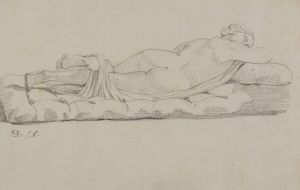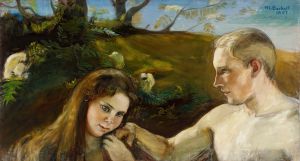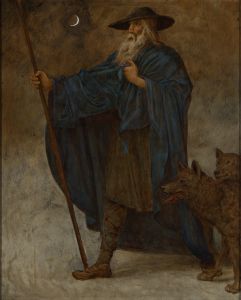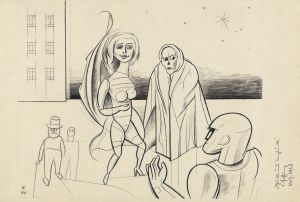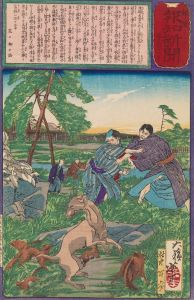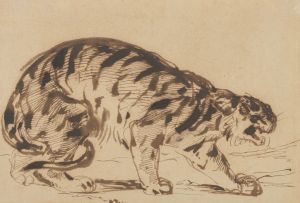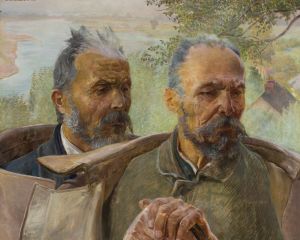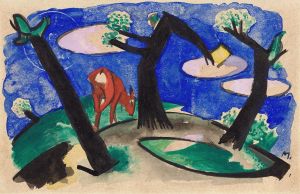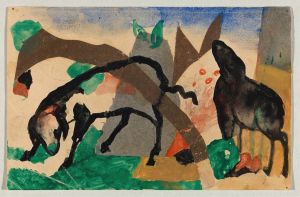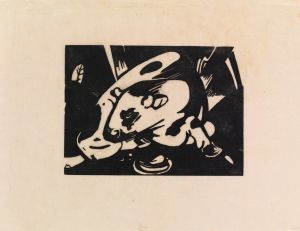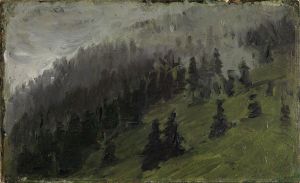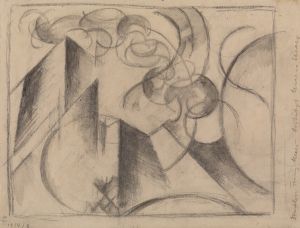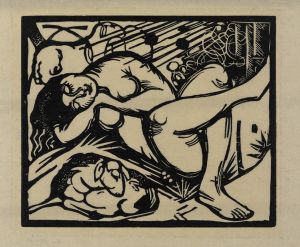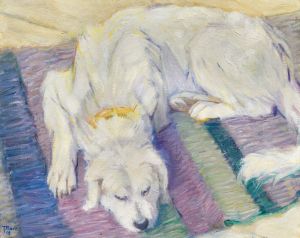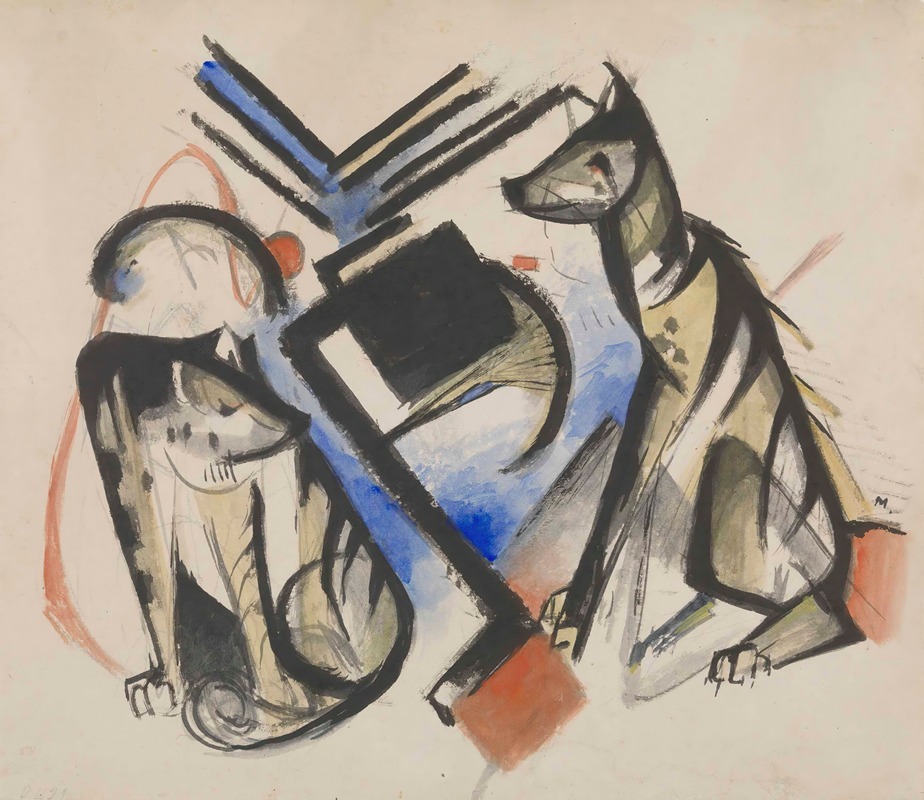
Two Wolves
A hand-painted replica of Franz Marc’s masterpiece Two Wolves, meticulously crafted by professional artists to capture the true essence of the original. Each piece is created with museum-quality canvas and rare mineral pigments, carefully painted by experienced artists with delicate brushstrokes and rich, layered colors to perfectly recreate the texture of the original artwork. Unlike machine-printed reproductions, this hand-painted version brings the painting to life, infused with the artist’s emotions and skill in every stroke. Whether for personal collection or home decoration, it instantly elevates the artistic atmosphere of any space.
"Two Wolves" is a painting by the German artist Franz Marc, who was a key figure in the German Expressionist movement and a founding member of the art group Der Blaue Reiter (The Blue Rider). Marc was born on February 8, 1880, in Munich, Germany, and his work is renowned for its vibrant use of color and its focus on animals, which he believed were purer and more beautiful than humans.
The painting "Two Wolves" was created in 1913, a period during which Marc's style was evolving towards abstraction and a more intense use of color. This work features two wolves rendered in a dynamic and somewhat abstract manner, with bold, expressive lines and a vivid palette. The wolves are depicted in a natural setting, which is typical of Marc's work, as he often sought to capture the spiritual essence of animals and their connection to nature.
Marc's use of color in "Two Wolves" is particularly notable. He employed a technique that involved using color to convey emotion and meaning rather than to represent the natural world realistically. The colors in the painting are likely chosen for their symbolic significance, a common practice in Marc's work. For example, he often used blue to represent spirituality and yellow to symbolize joy and serenity.
Franz Marc's interest in animals was not merely aesthetic; it was also philosophical. He believed that animals were closer to a spiritual truth that humans had lost touch with. This belief is evident in "Two Wolves," where the animals are portrayed with a sense of nobility and inner life. Marc's depiction of animals often aimed to evoke a sense of empathy and connection in the viewer, encouraging them to see the world from a different perspective.
"Two Wolves" is part of Marc's broader body of work that includes other famous paintings such as "The Large Blue Horses" and "Fighting Forms." His work was influential in the development of modern art, particularly in the way it combined elements of abstraction with a deep emotional and spiritual resonance.
Tragically, Franz Marc's career was cut short by his death in World War I. He was killed in action on March 4, 1916, at the age of 36. Despite his relatively short career, Marc left a lasting legacy, and his works continue to be celebrated for their innovative use of color and form, as well as their profound exploration of the natural world and the creatures within it.
"Two Wolves" remains an important example of Marc's artistic vision and his ability to convey complex ideas through the depiction of animals. The painting is held in high regard and is part of various collections and exhibitions that showcase the work of this pioneering artist.





